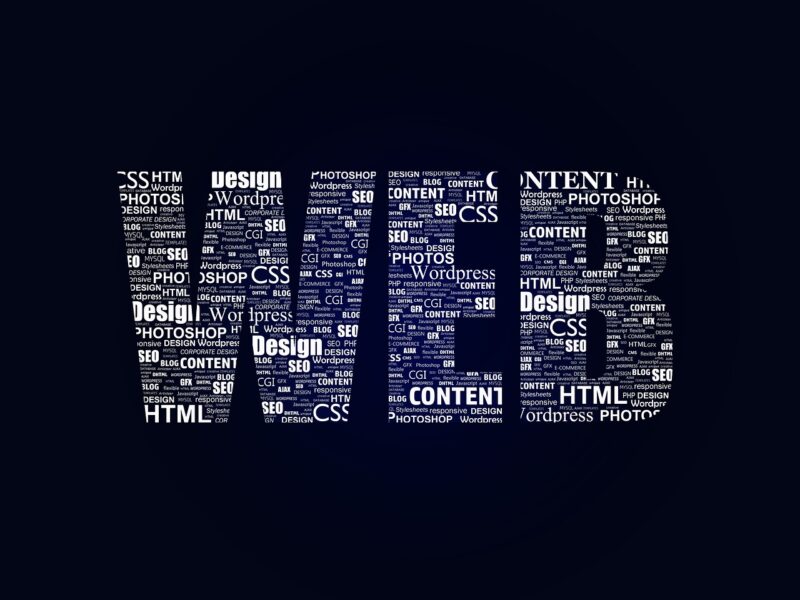
CSS frameworks have revolutionized the way web developers and designers create visually compelling sites. By offering pre-designed styles, components, and JavaScript functionalities, these frameworks save time and enhance productivity. Whether you are setting out to establish a new project or revamp an existing one, working with a CSS framework can greatly expedite your design process.
1. Bootstrap: The Most Popular Framework
Bootstrap reigns supreme among CSS frameworks, known for its responsive design capabilities and extensive documentation. Originally developed by Twitter, Bootstrap is packed with pre-built components like navigation bars, buttons, forms, and modals. Bootstrap’s grid system is particularly powerful for creating mobile-friendly designs without much effort. It’s also easily customizable, allowing you to override its default styles to suit your project needs.
Some key features include:
- Responsive grid system
- Pre-styled components
- Mobile-first approach
- Accessible and user-friendly
Bootstrap is ideal for developers who want a polished look while minimizing the time spent on CSS coding.
2. Tailwind CSS: Utility-First Framework
Tailwind CSS offers a different take from traditional frameworks, providing utility classes that enable developers to build designs directly within their HTML. This approach emphasizes a component-based design system where every utility corresponds to a CSS property.
Benefits of using Tailwind CSS include:
- Highly customizable
- Rapid prototyping
- Low specificity issues
- Minimal file size when purged
Tailwind’s design philosophy makes it easier to maintain consistent styles across your project, leading to a streamlined development experience.
3. Bulma: Flexbox-Based Framework
Bulma is a modern CSS framework purely based on Flexbox. It is simple to use and provides a clean, aesthetic design straight out of the box. Bulma’s responsive grid system allows for straightforward alignment of content and straightforward layout adjustments.
Highlights of Bulma include:
- Flexible layout
- Minimalist design
- No JavaScript dependencies
- Great documentation
This framework is especially appealing for designers who favor a clean aesthetic and intuitive layout structure.
4. Foundation: Advanced and Customizable
Foundation by ZURB is designed for advanced developers who require robust functionalities along with customization options. This framework excels in building responsive sites and has a wide variety of ready-to-use components. Foundation includes tools for accessibility, making it a comprehensive choice for serious projects.
Key features of Foundation are:
- Customizable grid and layout options
- Responsive design with mobile-first practices
- Pre-styled components for various needs
- Extensive plugins for added functionality
If you need a more complex solution or want complete control over how your styles are implemented, Foundation is an excellent choice.
5. Semantic UI: Defaulting to Human Language
Semantic UI aims at creating a language for sharing UI designs that are both visually powerful and easy to read. The framework uses natural language in its class names, which enhances readability and maintenance.
Benefits of Semantic UI include:
- User-friendly and human-readable classes
- Rich Theme options
- Integrated with React and Angular
- Extensive official components and elements
Semantic UI can enhance communication within development teams thanks to its use of familiar terminology.
6. Pure.css: A Minimalist Approach
Pure.css is a set of small, responsive CSS modules that can be used in any web project. Designed for maximum performance, Pure is minimalist and provides the essential tools to build responsive interfaces without soaking up a significant part of your site’s bandwidth.
Advantages of Pure.css include:
- Ultra-lightweight framework
- Customizable to fit your needs
- Fast loading time
- No CSS overrides necessary for most cases
Pure.css is perfect for projects where performance and load time are essential considerations.
7. Materialize CSS: Material Design Made Easy
Materialize CSS is a responsive front-end framework that provides components based on Google’s Material Design principles. If you aim to create a sleek and modern interface, Materialize CSS has everything you need with its substantial library of components that are visually appealing and easy to integrate.
Features of Materialize CSS include:
- Mobile-first and responsive
- Sass support for easier theming
- Wide variety of UI components
- Accessible to users with disabilities
Utilizing Materialize CSS can result in beautiful applications that adhere to modern design guidelines effortlessly.
8. Skeleton: Lightweight Boilerplate
Skeleton is designed to provide a minimal boilerplate for developers who want to build responsive web applications. This framework is exceptionally lightweight and includes a grid system, basic styles, and some components without any bloat.
Characteristics include:
- Minimalistic and quick to implement
- Optimized for mobile devices
- Basic, essential components only
- No JavaScript included, allowing better flexibility
Skeleton is the perfect starting point for fast prototyping or small projects where simplicity is key.
9. UIkit: Modular Framework
UIkit is a modular framework that complements flexibility with an extensive collection of pre-built components. UIkit allows you to load only the components you need, which optimizes loading time and efficiency for your web projects. Its structures increase consistency and maintainability across your applications.
Notable features include:
- Modularity and customization
- Robust documentation and community support
- Lightweight due to selective component loading
- Cross-platform compatibility
UIkit is a great choice for developers who appreciate modularity and want to fine-tune design components for custom applications.
10. Tachyons: Speedy & Functional
Tachyons is a functional CSS framework that emphasizes speed and simplicity. It provides a set of utility classes designed for performance, offering minimal CSS while allowing developers to write styles quickly and effectively directly in their HTML.
Key attributes include:
- Functional approach for rapid building
- Non-blocking styles promote fast loading times
- Customizable theme options
- Compact footprint for increased efficiency
Tachyons is an excellent option for projects where performance is particularly crucial, or the aim is to maintain a lightweight codebase.
Conclusion
Whether you are an experienced developer or just starting, choosing the right CSS framework can have a profound impact on your workflow and the final product. Each of the frameworks discussed offers unique features catering to different needs, styles, and preferences. Consider your project’s requirements, your design philosophy, and your team’s skill level while selecting the most suitable framework.
By leveraging the right CSS framework, you’ll have the tools to streamline your design process, reduce development time, and create responsive, visually stunning websites with ease.







